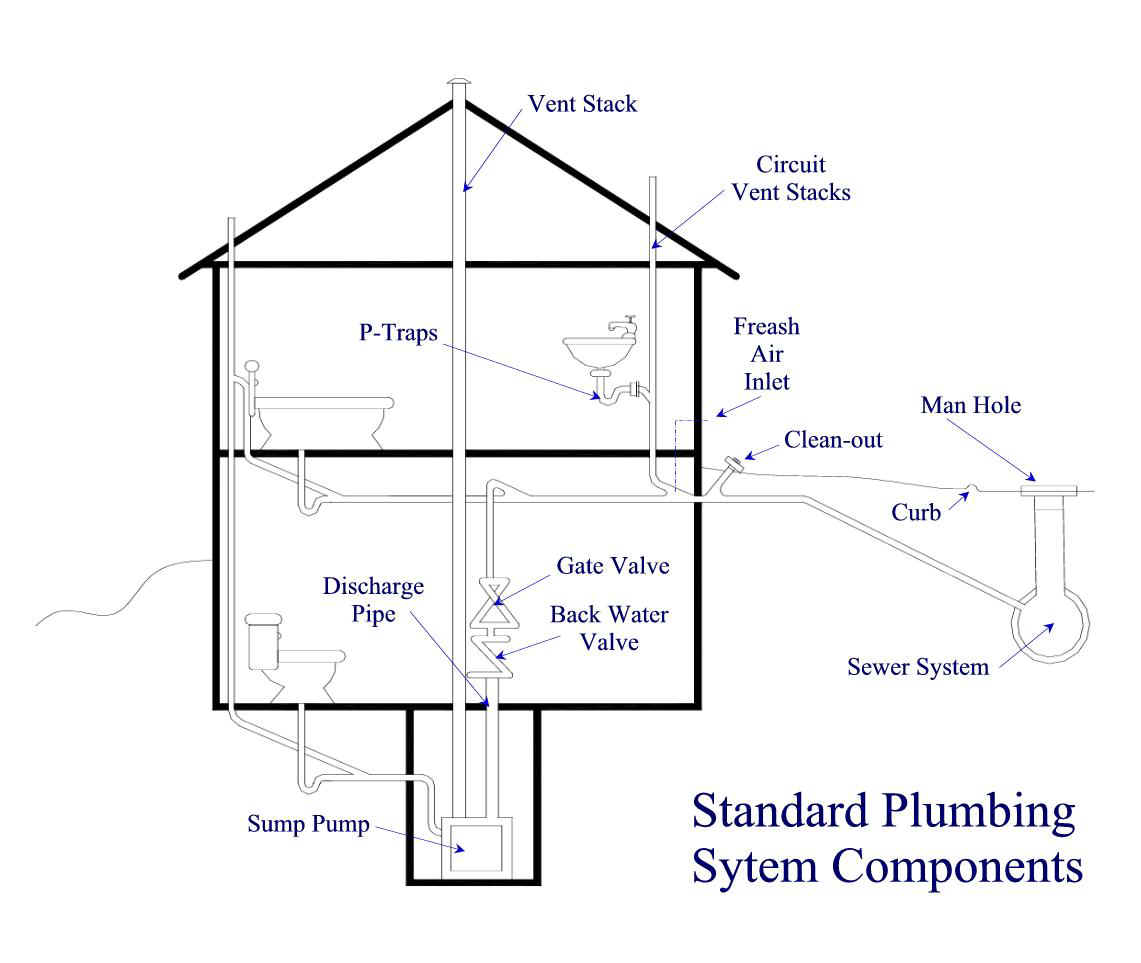 Our
homes require at a minimum two plumbing systems but can sometimes have
three. The first is the water supply coming into the home. The second is
the waste-water system to expel used or soiled water from the home and the third system is the gas supply system.
Our
homes require at a minimum two plumbing systems but can sometimes have
three. The first is the water supply coming into the home. The second is
the waste-water system to expel used or soiled water from the home and the third system is the gas supply system.
Of the three, the waste water system is the most complex and that's where we'll start.
The waste system must accomplish (or not do) several things.
-
Move waste water (and solids) to a disposal source. This can be to a pubic waste city-wide system or to a private in-ground septic system.
-
Control waste system gases that develop from waste decomposition which produces Methane gas.
-
Prevent the waste gases from coming into the home.
-
Have a method of adding fresh air to mix with the waste and gases developed in the waste system. Mixing fresh air with the methane gases reduces its toxic effects.
-
To control the flow of waste matter and ONLY allow waste to flow in one direction.

To the right is a simple layout of a common waste system (To enlarge the layout, just click on the photo)-->>
Lets try an experiment...
First get a small clear glass. Fill a sink with about 3-4 inches of water. Now take the glass and holding it upside down, lower it into the water until it touches the bottom. What did you notice? the glass remains empty. Now lets turn the glass on its side, let it fill and while still submerged, slowly turn the glass bottom up. (The glass should be full of water.) Now slowly lift the glass until it is slightly below the water line. What did you see now? The glass stayed full. Once you pull the glass upward, a mad rush of water comes running out of the glass.
I used this experiment to illustrate a fundamental law of physics called displacement (Or as started: "For every force there is an equal and opposing force."). This principle law is needed for our waste plumbing system to function properly. In this case, we are not looking for true balance in the system, but negative pressure to pull the waste from the house or in some cases, force the waste from the home by using a sump pump.
The system is therefore set up with P-traps to prevent gases from coming back into the home by placing a stop or plugging the waste system. The P-trap is cycled with new water each time it is used.
Next is the venting system. The venting system allows back pressures to be relieved and balances pressure within other components in the waste system. Venting also prevents the system from being completely emptied every time you flush. Included in the venting system components is the fresh air inlet to help mix outside air with waste and fumes.
The last are the gate valves and one-way valves which by the nature of their name, explains their purpose. They stop back-wash into the waste system and help to prevent waste from appearing in your tub or sink.
Next is the water supply system. Click the link to go to the next page.